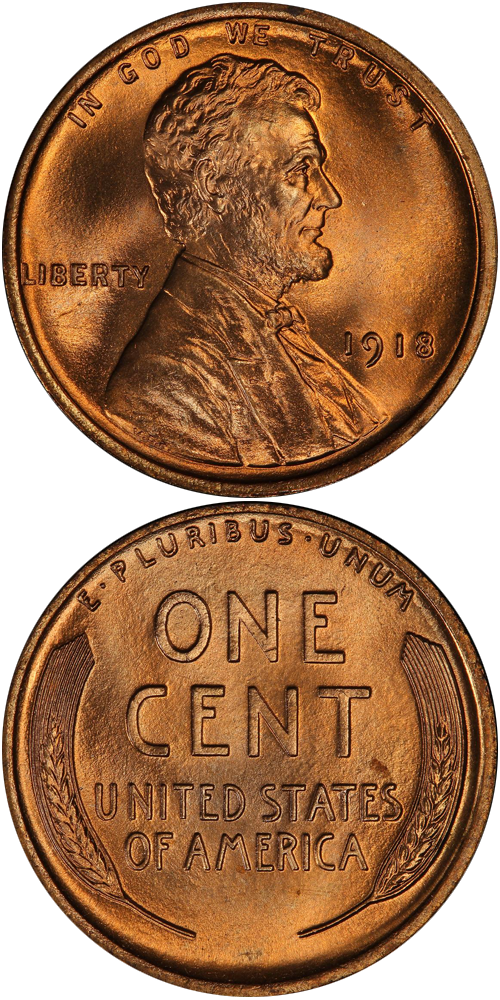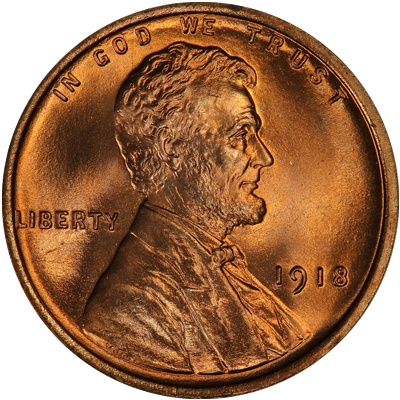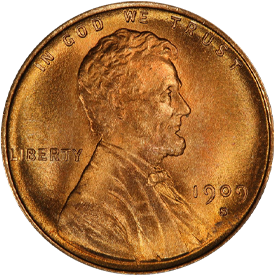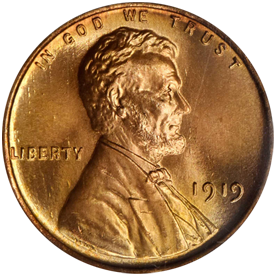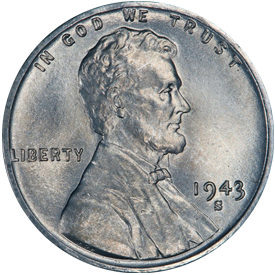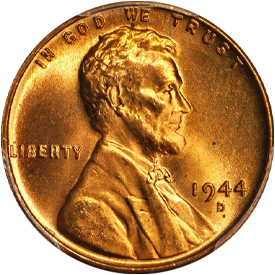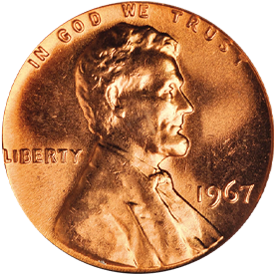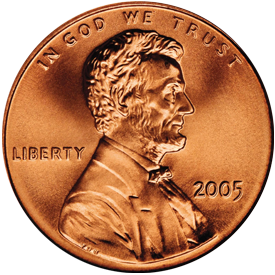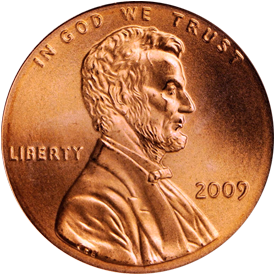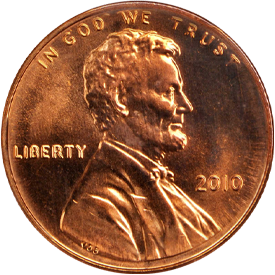After a fifty-year run, the Indian cent design was replaced by a new design, honoring President Abraham Lincoln on the centennial of his birth. Designed by Victor D. Brenner, his initials appeared at the bottom of the reverse on the first issues, but their prominence led to a public outcry, and they were quickly removed later in 1909. This led to an early “key” date, as only 484,000 pieces with the “V.D.B.” on the reverse were struck in San Francisco. While for many earlier issues, this quantity might even appear to be high, for a series as popular as Lincoln Cents, demand has exceeded supply resulting in a rather high price. The initials were restored in 1918, but in very small size and placed inconspicuously at the base of Lincoln’s bust on the obverse.
For the first fifty years, the reverse of the coin featured two ears of wheat at the left and right rim, with the large words “ONE CENT” at the upper center, and UNITED STATES OF AMERICA below. The motto E PLURIBUS UNUM appeared at the upper rim. The obverse portrayed a profile of Lincoln facing right, with IN GOD WE TRUST in small letters above, LIBERTY at left, and the date and mintmark at lower right.
During World War II, copper was seen as a strategic metal, and cents were struck from steel with a zinc coating during 1943. Copper from spent shell casings was used from 1944 through 1946. A few 1943 were struck in copper (in error) as well as a few 1944 cents struck in steel. These are both extremely rare isues and while technically errors, they command very high prices whenever they are offered for sale.
In 1959, the reverse was changed, and now pictured the Lincoln Memorial designed by Frank Gasparro, in a facing view. In 1982, the composition of the cent was changed from bronze to zinc, with a thin plating of copper. While the coins were lighter in weight, the copper plating left the appearance unchanged, and the new composition passed largely without public notice. In 2009, a series of four different reverse designs appeared, illustrating the various periods in Lincoln’s life. For 2010, a third new reverse made its debut, featuring a large shield.
Matte Proofs were struck in the early years (1909-1916) and brilliant proofs from 1936 to 1942, and again starting in 1950, continuing to the present. From 1965-67, only special strikings were made, and beginning in 1968, all proofs carried the “S” mintmark as production was shifted to San Francisco.
The Lincoln cent series remains popular with collectors and was almost universally the starting set for many of today’s older collectors. Key dates include the aforementioned 1909-S VDB, the 1914-D, the 1922 “Plain” cent, struck in Denver with no trace of the “D” mintmark, the 1931-S, the 1955/55 doubled die, and the 1972 doubled die. There are other “condition rarities” meaning that in low grade they are not particularly costly but in high grade can be both elusive and expensive. Included in this group are many mintmarked issues from the first twenty years of production or so.
